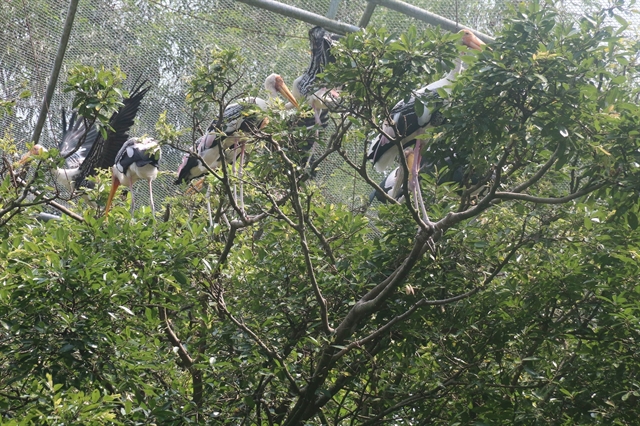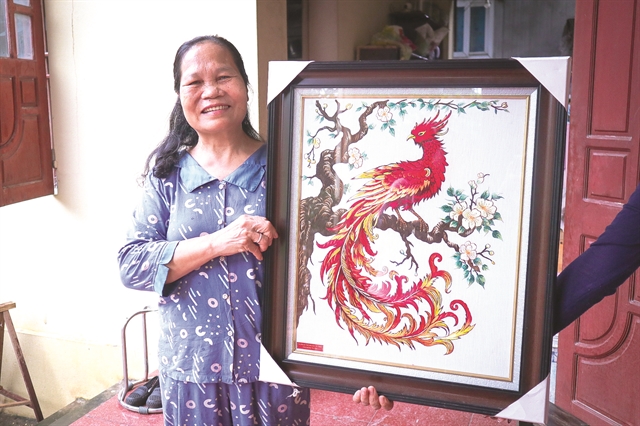 Features
Features

Even though industrial fabric is increasingly popular among S'Tiêng ethnic minority in the southern province of Bình Phước, local women and authorities have been making great efforts to preserve their traditional craft – handloom weaving.
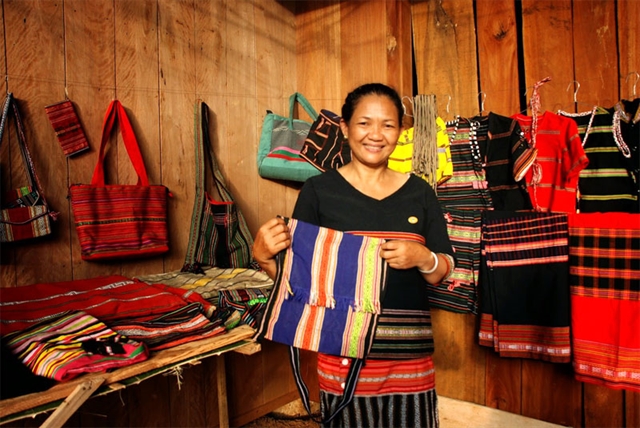
|
| Handloom fabric is an indispensable part of S'Tiêng culture. Photo binhphuoc.gov.vn |
By K GỬIH & Trần Trung
Even though industrial fabric is increasingly popular among S'Tiêng ethnic minority in the southern province of Bình Phước, local women and authorities have been making great efforts to preserve their traditional craft – handloom weaving.
Arriving at Phú Thuận Village, Phú Riềng District in Bình Phước in every late afternoon or on weekends, visitors will see S'Tiêng women sitting by handlooms weaving colourful cloth.
Their products are diverse, rich in colours, and can be used for pants, shirts, skirts, blankets, and quilts.
The S'Tiêng believe that mature men must know how to knit baskets while mature women must learn how to weave cloth before getting married.
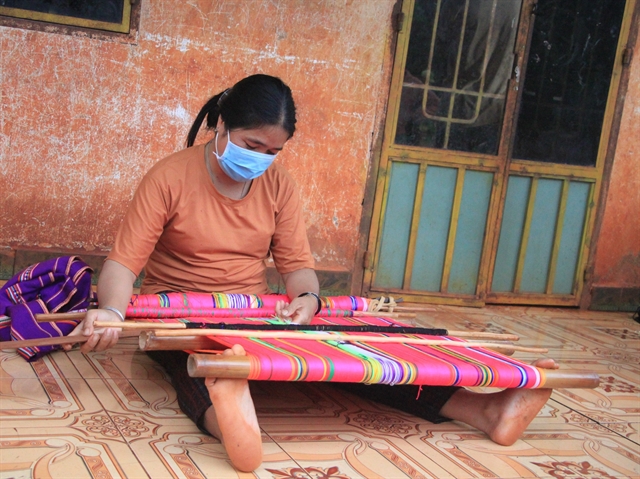
|
| Weaver Thị Bình has been practising the craft for nearly 20 years. VNA/VNS Photo K GỬIH |
Thị Bình, 42, has been practising the craft for almost 20 years. Born and raised in the border area of Bù Gia Mập District, she moved to Phú Riềng District after getting married. An indispensable part of her luggage is weaving tools.
Bình was interested in the craft since her grandmother and mother taught her at 15. Years of practising have made her an artisan with significant skills.
"We preserve our community's cultural identity by continuing to weave cloth on handloom. I will be pleased to pass the craft to younger people who are interested or gifted so that this part of our culture will not die out," she said.
Another artisan in the village is Thị Mương. Although she is getting old, she has never taken a day off work at the loom. Her skilful hands have woven thousands of metres of sophisticated, eye-catching fabrics.
According to Mương, artisanal cloth weaving goes through various complicated working stages before it is finished. The colour and fabric mainly originate from natural materials like wild leaves and forest tree bark. At the weaving stage, besides the loom, the worker also has to use other tools in combination with their skills.
"To create the sophisticated and unique patterns, the weavers must have skilful hands, an aesthetic sense and an understanding of lines, colours and shape. The weavers, therefore, are seen as painters," she said.
Mương said that the S'Tiêng fabric is decorated with many traditional patterns and motifs like cubes, humans, birds, animals, trees and flowers.
The local artisans have also modified their products to meet consumer tastes by creating more new decorative patterns and make new products such as colourful blankets, mattresses, tablecloths or bags.
"Our products are manually woven and priced, ranging from tens of thousands to millions of đồng. We do not earn a great profit from the work but do it to preserve and promote the traditions of our community," she said.
Preservation
Hớn Quản District in Bình Phước is now home to 1,000 S'Tiêng households who are still practising handloom weaving.
Their main products are blankets, towels and clothes, 80 per cent of which are consumed within the district and the rest within the province.
Weaving cooperatives have been established in many localities in Bình Phước to gather artisans and enthusiasts. However, their business still faces many difficulties, and many members cannot live by the craft.
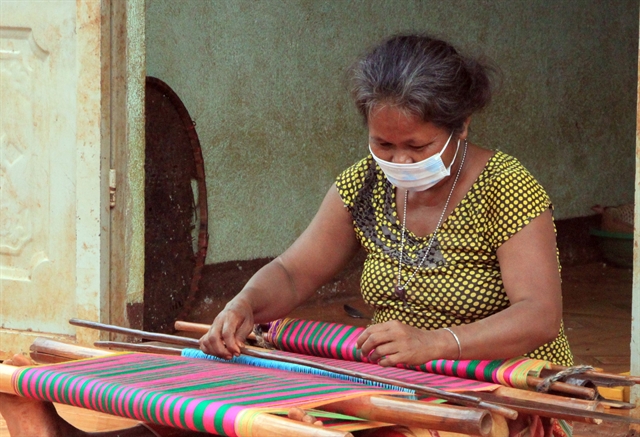
|
| Thị Nhoi is seen working with the loom to weave traditional fabric. VNA/VNS Photo K GỬIH |
"We only make ethnic products in our spare time as it is not our main source of income and only receive pre-orders, mostly for special events like New Year Festival, festivals or weddings," said Thị Nhoi, a local artisan.
Recognising this indispensable part of S'Tiêng cultural identity, the provincial authorities have approved a project to preserve and develop the traditional handloom weaving of the S'Tiêng in Hớn Quản with a total budget of VNĐ7.2 billion (US$315,000).
According to the project, the weaving craft in the district will attract 40-50 per cent of the ethnic households as its main labourers.
"The handloom weaving of the S'Tiêng in Hớn Quản is an ancient craft that contains both economic and cultural values," said Trần Văn Chung, director of Bình Phước Department of Culture, Sports and Tourism.
"The conservation and development of the craft contribute to not only the promotion of the national cultural values but also the economic and social development of the region."
According to Lê Thái Cảnh, chairman of Thanh An Commune People's Committee, the preservation of handloom weaving in the locality is considered a success as traditional fabric is suffering from fierce competition from industrial textiles.
"The local authorities are looking for more outlets for the ethnic cloth while supporting the weavers to maintain their craft," he said.
"However, in order to make artisans and weavers committed to and to live off the craft, it is necessary to receive more support and attention from organisations, and there should be more linkages among tourists areas so that S'Tiêng products can be introduced to more consumers."
With strong local efforts to maintain this ancient craft, the S'Tiêng are set to weave a bright and colourful future.
VNS


